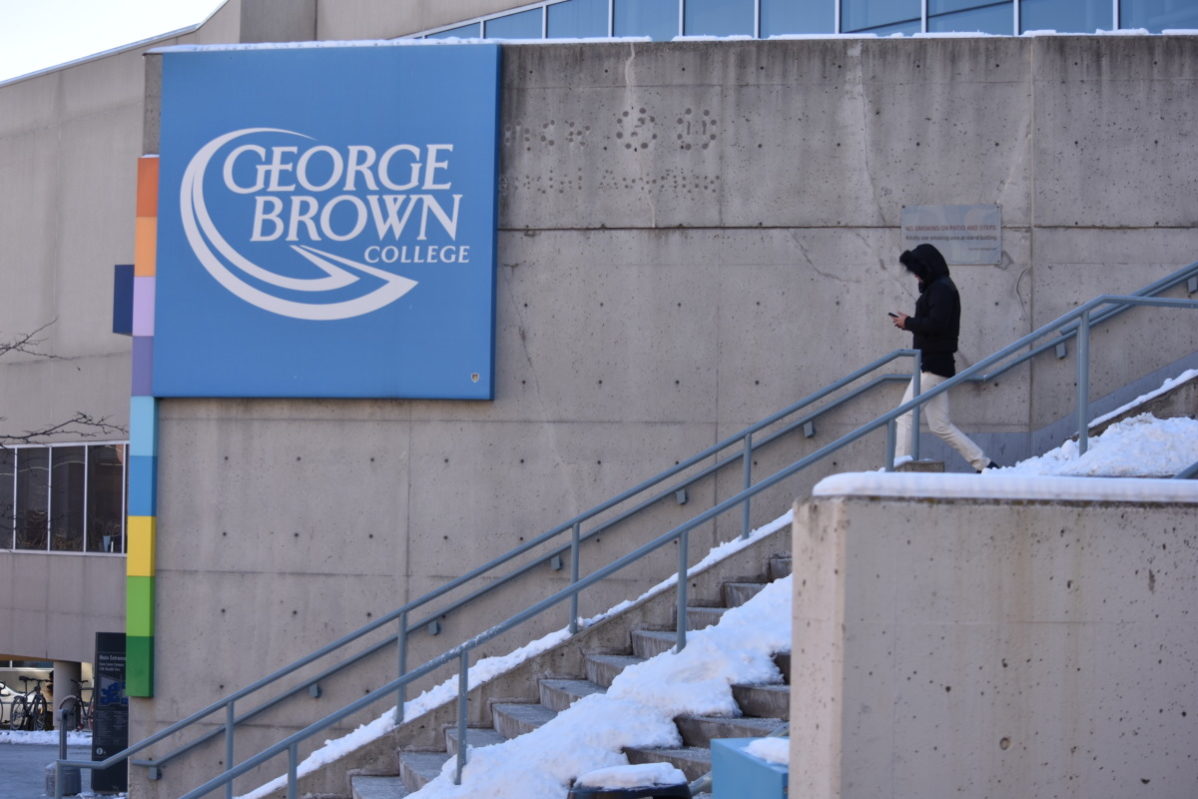Across Ontario, more than 25,000 students withdraw from fall semester, says Ministry of Advanced Education
Due to the strike, 2,429 students withdrew from the fall semester at George Brown College (GBC).
The majority of the withdrawals, 2,005, were domestic students, while 424 were international students, according to a spokesperson from the college. The withdrawals represent around 11.9 per cent of the college’s total full-time students, according to a preliminary report by the Ministry of Advanced Education and Skills Development.
GBC has the second-highest full-time student withdrawal rate of colleges in and around the Greater Toronto Area colleges behind Seneca College’s 13.3 per cent. Centennial College had the lowest rate at 8.1 per cent followed by Humber (8.3 per cent) and Sheridan (8.5 per cent), while Mohawk and Durham each withdrawal rates in the 11th percentile according to the ministry.
There were 25,676 withdrawals across the college system, for an average of 10.3 per cent, or one in 10 students withdrawing from the fall semester.
Karen Thomson, the college’s vice president, marketing, student life and alumni marketing, said that because GBC is one of the largest colleges in the province, the number of withdrawals would appear larger. But in all, Thomson said that the withdrawals were spread out relatively evenly across the programs, which she suggested shows the college accommodated its students well after the strike.
“I think the implication of that is that the return to school accommodations and plans were all working effectively across the board, and so if students did withdraw, it was really more about the student particulars than the college particulars,” she said.
In a statement, minister of advanced education Deb Matthews said that the preliminary numbers showed that the “vast majority” of students chose to stay in their programs and that many expected to re-enroll in January and September.
“I want to say to those students who did decide to withdraw, we hope you will return to college,” she said. “We need your talent and skills in this province and want to keep seeing you succeed.”
Ontario colleges were directed to use the savings derived from the strike to pay for the tuition refunds and the student relief fund by the ministry.
While Thomson could not provide the total cost of the tuition refunds and claims to the relief fund, she said that both are projected to be higher than what the college has saved.
“At this point, we’re looking to see where we can find the money ourselves,” she said. “But having said that, it’s one of many subjects that we’re talking to the ministry about.”
Peggy Sattler, who is the Ontario New Democrats’ advanced education critic, said that from what she has heard from the colleges, the money for tuition refunds and student relief payments isn’t there.
“Certainly, even on the hardship fund, the colleges have been pushing back against the government and saying the savings weren’t really as significant as the government has claimed,” she said.
The deadline to apply for Student Strike Relief Fund, which provides up to $500 for eligible students who have experienced financial impacts from the strike, is April 27, 2018.



